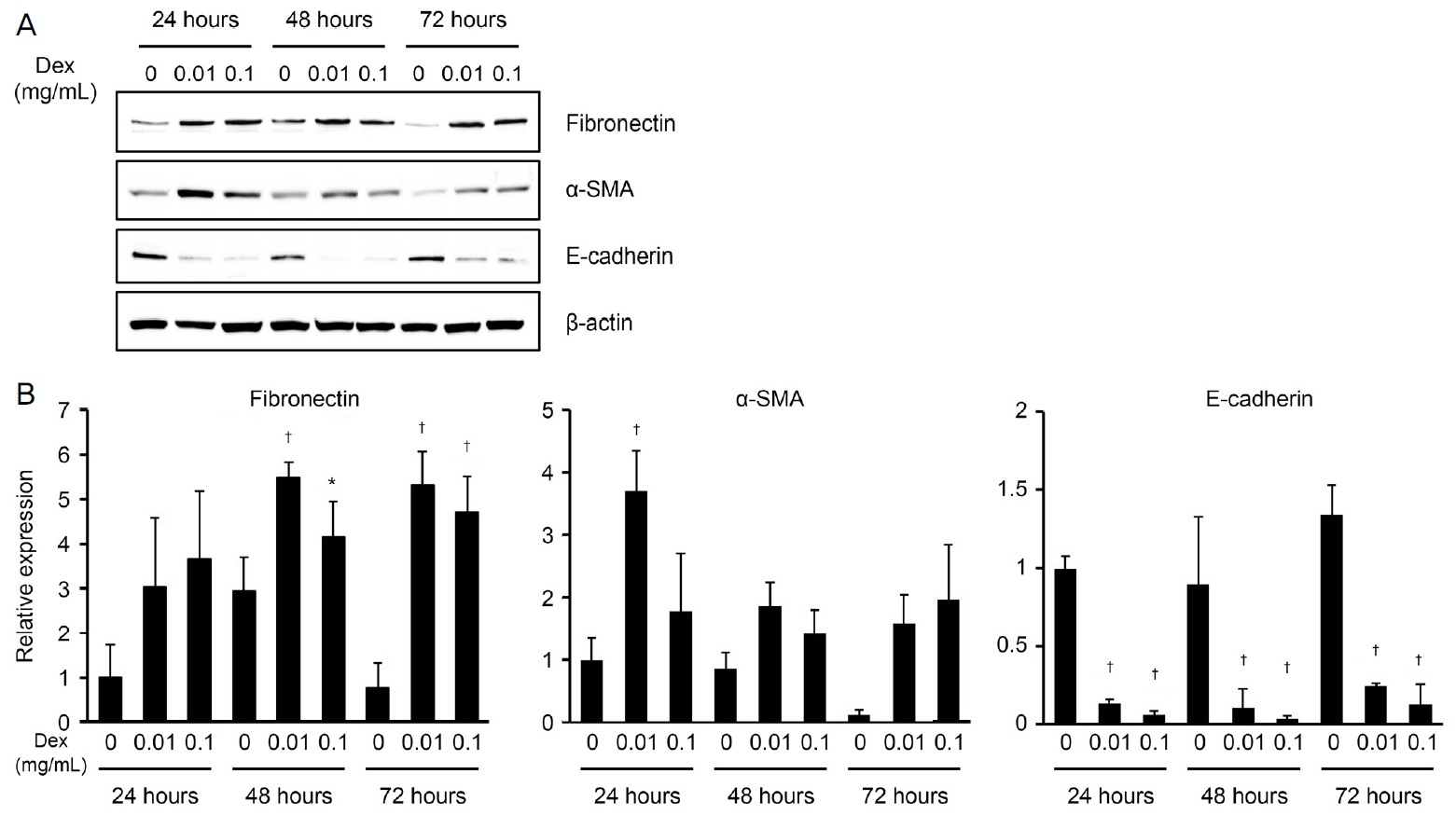1) Bourne RR, Stevens GA, White RA, et al. Causes of vision loss worldwide, 1990-2010: a systematic analysis. Lancet Glob Health 2013;1:e339-49.


2) Brown GC, Brown MM, Menezes A, et al. Cataract surgery cost utility revisited in 2012: a new economic paradigm. Ophthalmology 2013;120:2367-76.


3) West SK, Valmadrid CT. Epidemiology of risk factors for age-related cataract. Surv Ophthalmol 1995;39:323-34.


4) Jobling AI, Augusteyn RC. What causes steroid cataracts? A review of steroid-induced posterior subcapsular cataracts. Clin Exp Optom 2002;85:61-75.


5) James ER. The etiology of steroid cataract. J Ocul Pharmacol Ther 2007;23:403-20.


6) Zaczek A, Zetterström C. Posterior capsule opacification after phacoemulsification in patients with diabetes mellitus. J Cataract Refract Surg 1999;25:233-7.


7) Praveen MR, Shah GD, Vasavada AR, et al. Posterior capsule opacification in eyes with steroid-induced cataracts: comparison of early results. J Cataract Refract Surg 2011;37:88-96.


8) Watson D, Noble MJ, Dutton GN, et al. Penetration of topically applied dexamethasone alcohol into human aqueous humor. Arch Ophthalmol 1988;106:686-7.


9) Hyndiuk RA, Reagan MG. Radioactive depot-corticosteroid penetration into monkey ocular tissue. I. Retrobulbar and systemic administration. Arch Ophthalmol 1968;80:499-503.


10) Best JH, Kong AM, Lenhart GM, et al. Association between glucocorticoid exposure and healthcare expenditures for potential glucocorticoid-related adverse events in patients with rheumatoid arthritis. J Rheumatol 2018;45:320-8.


11) Nath T, Roy SS, Kumar H, et al. Prevalence of steroid-induced cataract and glaucoma in chronic obstructive pulmonary disease patients attending a tertiary care center in India. Asia Pac J Ophthalmol (Phila) 2017;6:8-32.


12) James ER, Robertson L, Ehlert E, et al. Presence of a transcriptionally active glucocorticoid receptor alpha in lens epithelial cells. Invest Ophthalmol Vis Sci 2003;44:5269-76.


13) Lyu J, Kim JA, Chung SK, et al. Alteration of cadherin in dexamethasone-induced cataract organ-cultured rat lens. Invest Ophthalmol Vis Sci 2003;44:2034-40.


14) Gupta V, Wagner BJ. Expression of the functional glucocorticoid receptor in mouse and human lens epithelial cells. Invest Ophthalmol Vis Sci 2003;44:2041-6.


15) Eshaghian J, Streeten BW. Human posterior subcapsular cataract. An ultrastructural study of the posteriorly migrating cells. Arch Ophthalmol 1980;98:134-43.


16) Sue Menko A. Lens epithelial cell differentiation. Exp Eye Res 2002;75:485-90.


17) Chamberlain CG, McAvoy JW. Induction of lens fibre differentiation by acidic and basic fibroblast growth factor (FGF). Growth Factors 1989;1:125-34.


18) Ibaraki N, Lin LR, Reddy VN. Effects of growth factors on proliferation and differentiation in human lens epithelial cells in early subculture. Invest Ophthalmol Vis Sci 1995;36:2304-12.

19) Reneker LW, Overbeek PA. Lens-specific expression of PDGF-A alters lens growth and development. Dev Biol 1996;180:554-65.


20) Leenders WP, van Genesen ST, Schoenmakers JG, et al. Synergism between temporally distinct growth factors: bFGF, insulin, and lens cell differentiation. Mech Dev 1997;67:193-201.


21) Klok E, Lubsen NH, Chamberlain CG, McAvoy JW. Induction and maintenance of differentiation of rat lens epithelium by FGF-2, insulin, and IGF-1. Exp Eye Res 1998;67:425-31.


22) Bhuyan DK, Reddy PG, Bhuyan KC. Growth factor receptor gene and protein expressions in the human lens. Mech Ageing Dev 2000;113:205-18.


23) Collison DJ, Duncan G. Regional differences in functional receptor distribution and calcium mobilization in the intact human lens. Invest Ophthalmol Vis Sci 2001;42:2355-63.

24) de Iongh RU, Gordon-Thomson C, Chamberlain CG, et al. TGFbeta receptor expression in lens: Implications for differentiation and cataractogenesis. Exp Eye Res 2001;72:649-59.


25) de Iongh RU, Lovicu FJ, Overbeek PA, et al. Requirement for TGFbeta receptor signaling during terminal lens fiber differentiation. Development 2001;128:3995-4010.

26) Le AC, Musil LS. FGF signaling in chick lens development. Dev Biol 2001;233:394-411.


28) Ghinelli E, Aloe L, Cortes M, et al. Nerve growth factor (NGF) and lenses: effects of NGF in an in vitro rat model of cataract. Graefes Arch Clin Exp Ophthalmol 2003;241:845-51.


29) Gato A, Martin C, Alonso MI, et al. Chondroitin sulphate proteoglycan is involved in lens vesicle morphogenesis in chick embryos. Exp Eye Res 2001;73:469-78.


30) Inatani M, Tanihara H, Oohira A, et al. Neuroglycan C, a neural tissue-specific transmembrane chondroitin sulfate proteoglycan, in retinal neural network formation. Invest Ophthalmol Vis Sci 2000;41:4338-46.

31) Escher P, Cottet S, Aono S, et al. Differential neuroglycan C expression during retinal degeneration in Rpe65-/- mice. Mol Vis 2008;14:2126-35.


32) Cottet S, Jüttner R, Voirol N, et al. Retinal pigment epithelium protein of 65 kDA gene-linked retinal degeneration is not modulated by chicken acidic leucine-rich epidermal growth factor-like domain containing brain protein/Neuroglycan C/chondroitin sulfate proteoglycan 5. Mol Vis 2013;19:2312-20.


34) Kurose H, Bito T, Adachi T, et al. Expression of fibroblast growth factor 19 (Fgf19) during chicken embryogenesis and eye development, compared with Fgf15 expression in the mouse. Gene Expr Patterns 2004;4:687-93.


35) Francisco-Morcillo J, Sánchez-Calderón H, Kawakami Y, et al. Expression of Fgf19 in the developing chick eye. Brain Res Dev Brain Res 2005;156:104-9.


36) Kurose H, Okamoto M, Shimizu M, et al. FGF19-FGFR4 signaling elaborates lens induction with the FGF8-L-Maf cascade in the chick embryo. Dev Growth Differ 2005;47:213-23.


37) Nakayama Y, Miyake A, Nakagawa Y, et al. Fgf19 is required for zebrafish lens and retina development. Dev Biol 2008;313:752-66.












 PDF Links
PDF Links PubReader
PubReader ePub Link
ePub Link Full text via DOI
Full text via DOI Download Citation
Download Citation Print
Print



